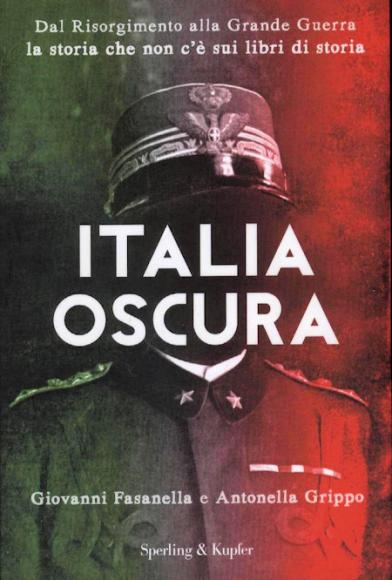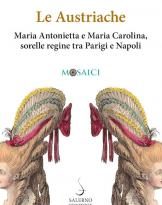Giovanni Fasanella, Antonella Grippo
Ed. Sperling & Kupfer
pp. 491
The authors, he is a journalist, she is a professor of Italian and History, and they start their research from 1861, the year of Cavour's death, to arrive at 1921 with the massacre of the Diana theater in Milan which "paved the way for the stabilization of Italy under the fascist iron fist ”.
It is a story, told in this essay, which is not read in school books, "where legends have flourished that are beautiful, but not always true".
The first protagonist of this essay is Cavour, who began his political career as a minister of agriculture thanks to Massimo D'Azeglio, prime minister of the Kingdom of Sardinia from 1849 to 1852. He called him - overcoming the resistance of the king to whom that young crafty and arrogant he did not like - in 1850 only to be liquidated and replaced in 1852 by Cavour himself.
Determined to destabilize the order established in the Congress of Vienna, whose status quo was Austria and Russia, Cavour approached France and England - which were pressing for a new balance - with the alliance on the occasion of the 1855 Crimean War . To have control over the Mediterranean, especially after the opening of the Suez Canal, it was necessary to aim for Sicily. And so, Cavour, having learned that "a well-known leader, Giuseppe Garibaldi, had bought an English ship to attempt a coup in Sicily with the support of Lord Palmerston" (British prime minister), came into contact with him, freemason and antipapist, with the program to bring down the Bourbon kingdom, without however stopping in Naples, "but arriving in Rome to erase from the map the Papal State, the absolute enemy, symbol of a centuries-old struggle. England therefore promoted the project of an Italian unitary State even in opposition to France. "
The 5 May 1860 the Thousand (1067 to be precise) took off from Genoa with ships (owned by the Rubattino company) Lombard, under the command of Bixio, e Piemonte, under the command of Garibaldi and Salvatore Castiglia. On May 11, with the protection of two English ships, theArgus andIntrepid, the landing took place in Marsala. The Masonic and Cavourian gold was used for the corruption of Bourbon officials and dignitaries. It was Massimo D'Azeglio himself who resized Garibaldi's myth by writing: "Nobody esteems and appreciates the character and certain qualities of Garibaldi more than I do, but when he won an army of 60.000 men, he won a reign of six million , with the loss of eight men, one should think that there is something not ordinary underneath, that one does not find everywhere not to believe oneself to be the master of the globe. "
In Calatafimi, the 18 May 1860, General Landi ordered the retreat "at the very moment when the Bourbonists [...] were overwhelming, so much so that they even managed to wrest the flag from the Garibaldians." The agreed price was for 14.000 gold ducats. But Landi was not the only Bourbon official to betray Francis II. "Naples looked like a ship from which all the mice tried to escape." Cavour meanwhile, while the Garibaldians went up the peninsula, was preparing for the invasion of the Papal States.
The "piedmontization" of the Two Sicilies the 21 October 1860 took place through voting, whose regularity is questioned by the chronicles of the time. The 26 October, in Vairano (and not in Teano) "the king received his powers on the new territories and at the same time he thought well to thank Garibaldi by dissolving the forces of volunteers that have now become dangerous and useless."
With the changing of the guard the unscrupulous financial management of the Thousand expedition was put under accusation. Thus it was asked "to the deputy general of the Garibaldian finances in Sicily, the writer Ippolito Nievo, to return to Palermo to recover the documentation of the expenses incurred and bring them to Turin." The 4 March 1861 Ippolito Nievo, after collecting the necessary papers, set sail from Palermo aboard the steamer Hercules that, after a day of sailing, was shipwrecked off Capri. 68 people died. ”A few days after the suspected shipwreck, the 17 March 1861, the Kingdom of Italy was born. And oblivion descended upon that mass of doubt. A massacre that inaugurated the secret history of a united Italy in the name of Vittorio Emanuele II.
"The following June 6 died Cavour. With his departure from the scene, with Garibaldi exiled in Caprera, and with the shipwreck of the Hercules, almost all the protagonists of the unification of Italy had left the scene. Only Vittorio Emanuele II remained, who claimed that "the Italians are not ready for a parliamentary government. I'll have to handle them with bayonets and bribes. "
The former Bourbon kingdom became a powder keg. "The Turin government seemed completely powerless from a political point of view. The only answer was the military one. "No form of revolt or protest was tolerated. "The punishments were exemplary. The most atrocious fate touched two countries of the Matese: Pontelandolfo and Casalduni. ". The violence of repression and the desire for revenge further exacerbated the climate of resistance by increasing the number of brigands. And so, for the fight against banditry, full powers were concentrated in the hands of the generals Enrico Cialdini and Alfonso La Marmora.
The 24 August 1862, in the South, the state of siege was proclaimed.
Gianlorenzo Capano












